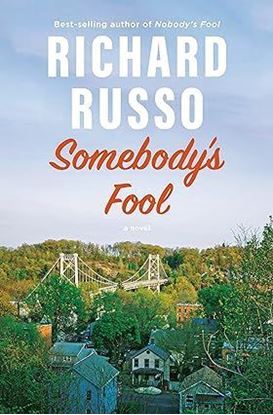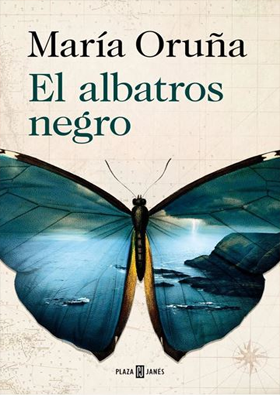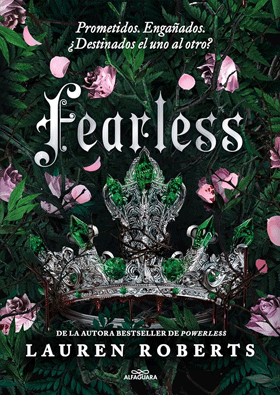

SHOW DON'T TELL
In her second story collection, Sittenfeld shows why she’s as beloved for her short fiction as she is for her novels. In these dazzling stories, she conjures up characters so real that they seem like old friends, laying bare the moments when their long held beliefs are overturned.
In “The Patron Saints of Middle Age,” a woman visits two friends she hasn’t seen since her divorce. In “A for Alone,” a married artist embarks on a creative project intended to disprove the so-called Mike Pence Rule, which suggests that women and men can’t spend time alone together without lusting after each other. And in “Lost but Not Forgotten,” Sittenfeld gives readers of her novel Prep a window into the world of her beloved character Lee Fiora, decades later, when Lee attends an alumni reunion at her boarding school.
Hilarious, thought-provoking, and full of tenderness for her characters, Sittenfeld’s stories peel back layer after layer of our inner lives, keeping us riveted to the page with her utterly distinctive voice.
1,300
975
SISTER, BUTCHER, SISTER
The Rowling sisters have always been people you can understand – with partners and children, homes and dreams. And secrets, the sisters have those too. But when Kate, the eldest, finally returns to buy her late grandfather's home, the dark things each sister has kept buried soon rise to the surface.
Is Kate having unexplained visions tied to a past she can hardly recall? Is Aurora, the married mother of two, finally acting out in the face of her sisters' indiscretions? Is Peggy, the youngest and a recovering addict, able to move on from the memories that haunt her?
1,100
825
SMART, NOT LOUD
When Jessica Chen entered the workforce, she felt like everything she had been taught growing up in a Quiet Culture household—where deference, humility, harmony, and dogged hard work were praised—failed to set her up for success in the “real world.” Her ingrained values were in direct contrast with what was actually needed to stand out in a Loud Culture workplace. The result? Feeling underappreciated, passed over for opportunities and promotions, and completely stuck.
Building on the lessons she learned as an award-winning TV news journalist, Chen—who now speaks at Fortune 100 companies and whose LinkedIn Learning courses have been watched by over 2 million people—introduces a new way of getting noticed at work, without being loud, aggressive, or boastful. In Smart, Not Loud, Chen teaches readers how they can look within, to the values they already hold, to more effectively show up.
1,995
1,496
SOMEBODY'S FOOL (MREXP)
Ten years after the death of the magnetic Donald “Sully” Sullivan, the town of North Bath is going through a major transition as it is annexed by its much wealthier neighbor, Schuyler Springs. Peter, Sully’s son, is still grappling with his father’s tremendous legacy as well as his relationship to his own son, Thomas, wondering if he has been all that different a father than Sully was to him.
Meanwhile, the towns’ newly consolidated police department falls into the hands of Charice Bond, after the resignation of Doug Raymer, the former North Bath police chief and Charice’s ex-lover. When a decomposing body turns up in the abandoned hotel situated between the two towns, Charice and Raymer are drawn together again and forced to address their complicated attraction to one another. Across town, Ruth, Sully’s married ex-lover, and her daughter Janey struggle to understand Janey’s daughter, Tina, and her growing obsession with Peter’s other son, Will. Amidst the turmoil, the town’s residents speculate on the identity of the unidentified body, and wonder who among their number could have disappeared unnoticed.
Infused with all the wry humor and shrewd observations that Russo is known for, Somebody's Fool is another classic from a modern master.
850
638
SOMEONE LIKE US
After abandoning his once-promising career as a journalist in search of a new life in Paris, Mamush meets Hannah—a photographer whose way of seeing the world shows him the possibility of finding not only love but family. Now, five years later, with his marriage to Hannah on the verge of collapse, he returns to the close-knit immigrant Ethiopian community of Washington, DC, that defined his childhood. At its center is Mamush’s stoic, implacable mother, and Samuel, the larger-than-life father figure whose ceaseless charm and humor have always served as a cover for a harder, more troubling truth. But on the same day that Mamush arrives home in Washington, Samuel is found dead in his garage.
With Hannah and their two-year-old son back in Paris, Mamush sets out on an unexpected journey across America in search of answers to questions he’d been told never to ask. As he does so, he begins to understand that perhaps the only chance he has of saving his family and making it back home is to confront not only the unresolved mystery around Samuel’s life and death, but his own troubled memories, and the years spent masking them.
1,650
1,238
SONNY BOY
To the wider world, Al Pacino exploded onto the scene like a supernova. He landed his first leading role, in The Panic in Needle Park, in 1971, and by 1975, he had starred in four movies—The Godfather and The Godfather Part II, Serpico, and Dog Day Afternoon—that were not just successes but landmarks in the history of film. Those performances became legendary and changed his life forever. Not since Marlon Brando and James Dean in the late 1950s had an actor landed in the culture with such force.
1,995
1,496













